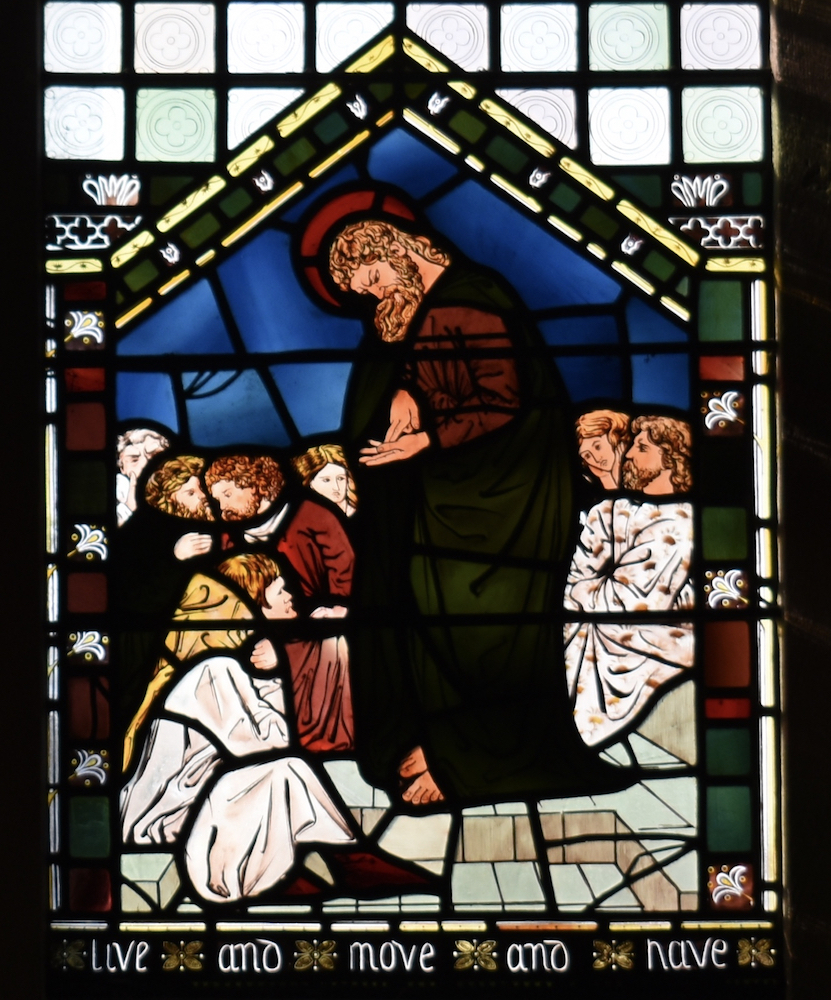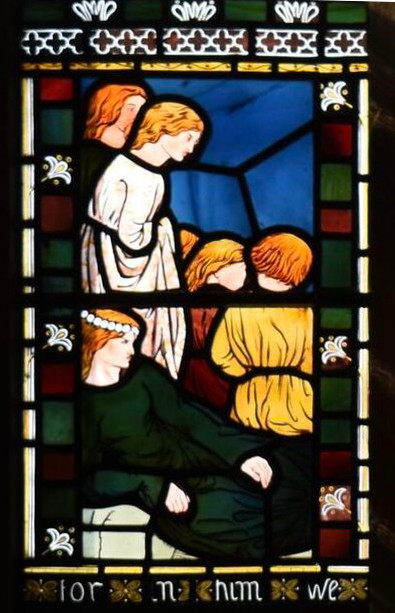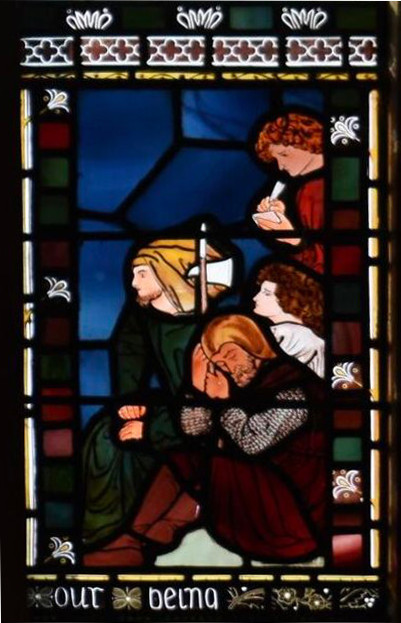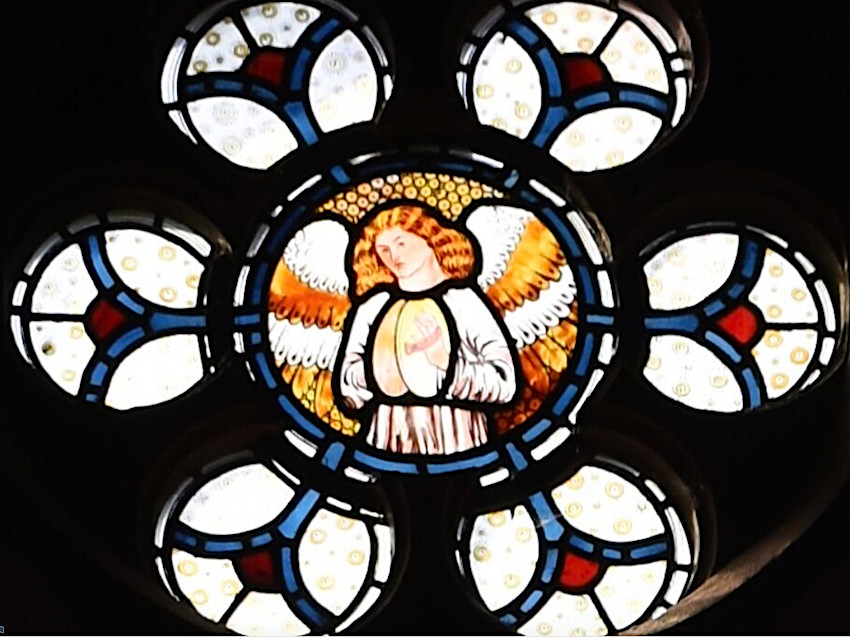

St Paul at the Areopagus: nave window designed by William Morris, 1862, in All Saints, Selsley, a church in Gloucestershire designed by G. F. Bodley. While the windows were the Morris firm's collaborative effort, and Philip Webb was behind the "overall design" here (Jenkins 263), individual windows are attributed to different partners. As for the general scheme, David O'Connor tells us that
the approach to the glazing is derived from a type first used in France at this date [the thirteenth century], a band-window scheme in which highly-coloured figure panels are set in horizontal bands against grisaille glazing, giving the opportunity for imagery while maintaining a light interior.
This, O'Connor continues, "helps to unify the architecture, though there are minor modifications to allow more light on the darker northern side of the church" (38).
In the middle panel here, Morris shows St Paul during his visit to Athens, explaining the nature of Christ and the tenets of Christianity earnestly, as in Acts 17. Some of those who had come to hear him were scornful, some wanted to know more about the subject, and some "clave unto him, and believd" (17, 34). Above the gathering, in the tracery lights, an angel clashes symbols (see last image here), and below that are the pelican feeding its young, on the left, as St Paul "feeds" his listeners (and as Christ sacrificed himself for mankind); and the Lamb of God on the right. Close to St Paul, people listen intently. One on the left, with unruly hair and hair, who looks very like Morris himself, is whispering to his friend.


Left: The left-hand panel. Right: The right-hand panel.
Here are people in the gathering sitting or standing (or, in the case of a soldier on the far right) apparently nodding off. Someone behind him, however, a younger man, is diligently making notes. On the right, the young woman with a circlet of flowers round her head, reminds us of Mary Magdalen. There are some youngsters here, as well. This sermon or lecture was an important stage in the Christian ministry.
Photographs by Dr. Jim Cheshire, who retains the copyright. Dr. Cheshire has most generously shared his photographs of the church with us, and provided caption material. Commentary and formatting by Jacqueline Banerjee. [Click on the images to enlarge them.]

Related Material
- All Saints, Selsley, designed by G. F. Bodley (this provides a list of links to other beautiful Morris windows in All Saints)
Bibliography
"Church of All Saints." Historic England. Web. 25 June 2018.
Jenkins, Simon. England's Thousand Best Churches. Rev. ed. London: Penguin, 2009.
O'Connor, David. "Morris stained glass: 'an art of the Middle Ages.'" In William Morris and the Middle Ages: A Collection of Essays together with a Catalogue of works.... Ed. Joanna Banham and Jennifer Harris. Manchester: Manchester University Press, 1984. 31-46.
Created 25 June 2018